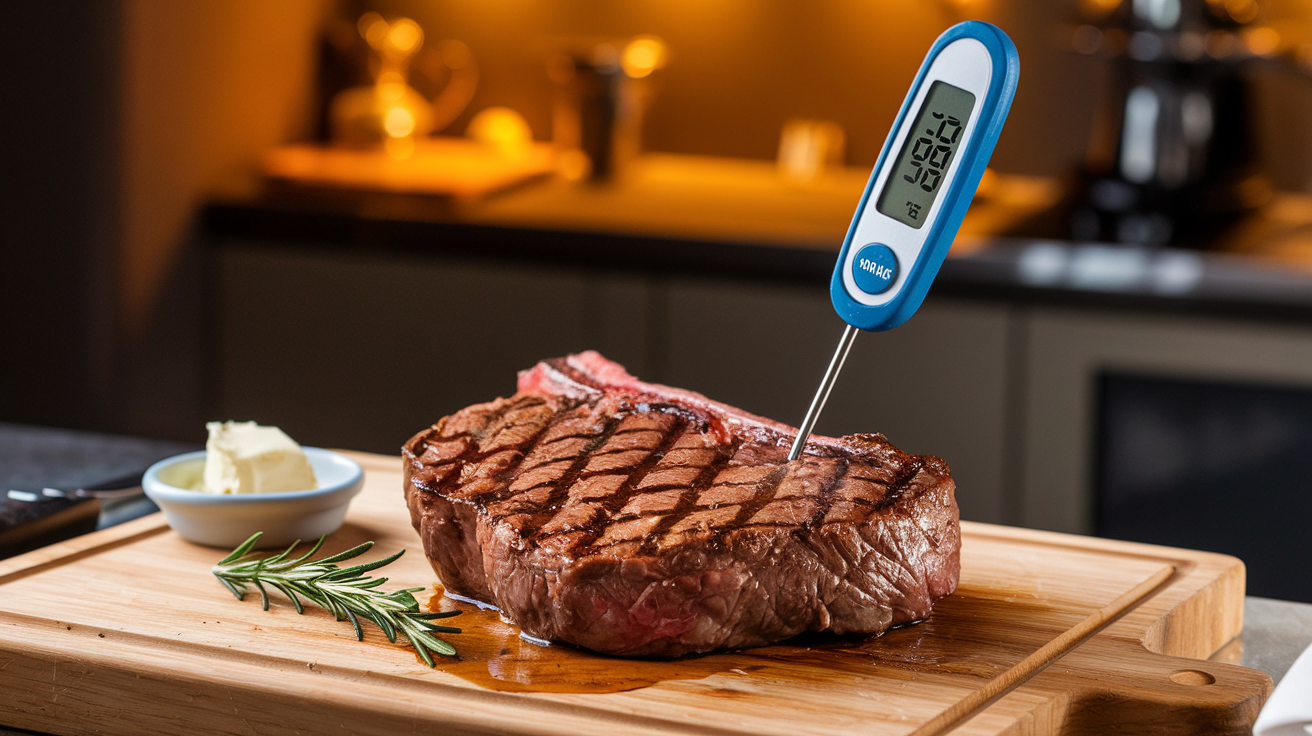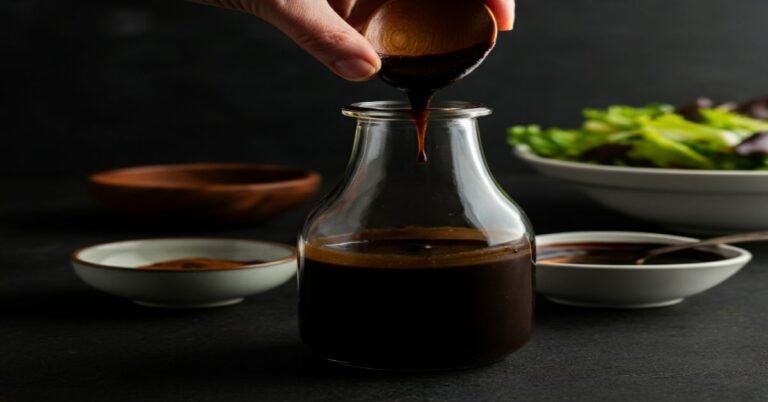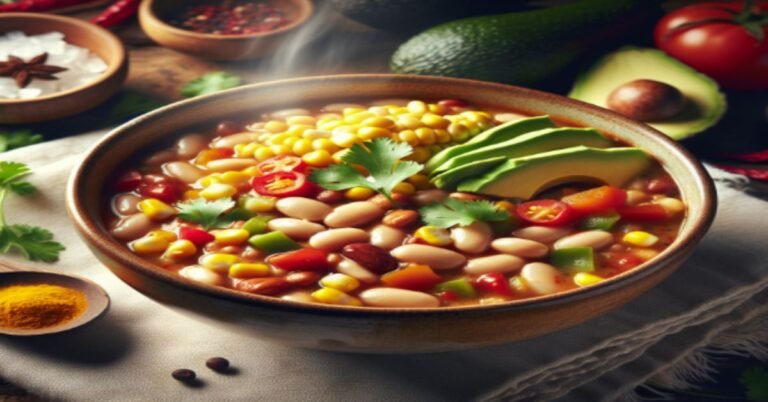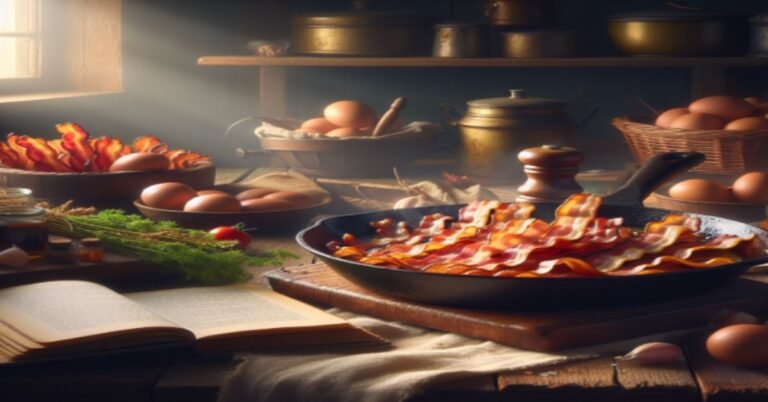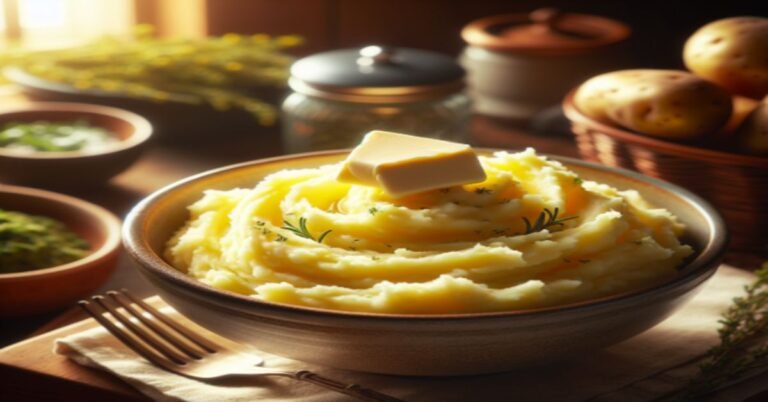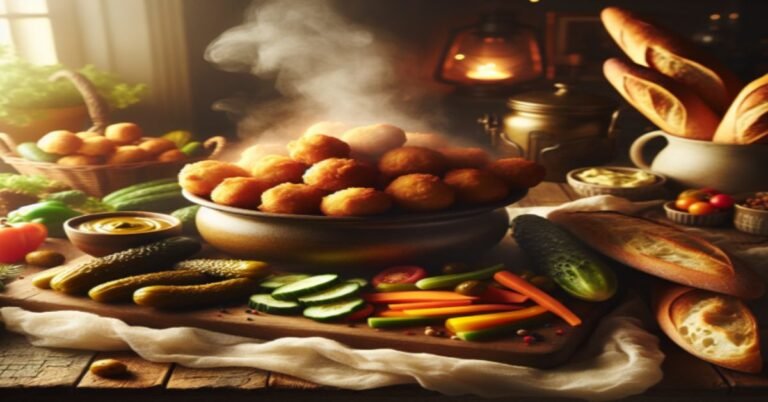Steak Doneness and Temperature Guides
Picture this: you’ve just bought a premium cut of steak, eager to savor its juicy perfection. But as you stand in the kitchen, a wave of uncertainty washes over you. How long should you cook it? What’s the ideal temperature? The difference between a mouthwatering masterpiece and a disappointing disaster often lies in these crucial details.
Achieving the perfect steak is an art form that combines science and culinary finesse. From rare to well-done, each level of doneness offers a unique experience, influencing the texture, flavor, and juiciness of your prized cut. But fear not! Whether you’re a novice cook or a seasoned chef, mastering the secrets of steak doneness and temperature control can elevate your cooking game to new heights. You may also like our medium rate steak temp recipes.
In this comprehensive guide, we’ll demystify the world of steak preparation. We’ll explore the optimal temperatures for different doneness levels, share chef-tested techniques for achieving perfection, and reveal essential tips to make your steak-cooking endeavors a resounding success. Get ready to impress your guests and satisfy your carnivorous cravings as we dive into the sizzling world of steak doneness and temperature guides!
Understanding Steak Doneness
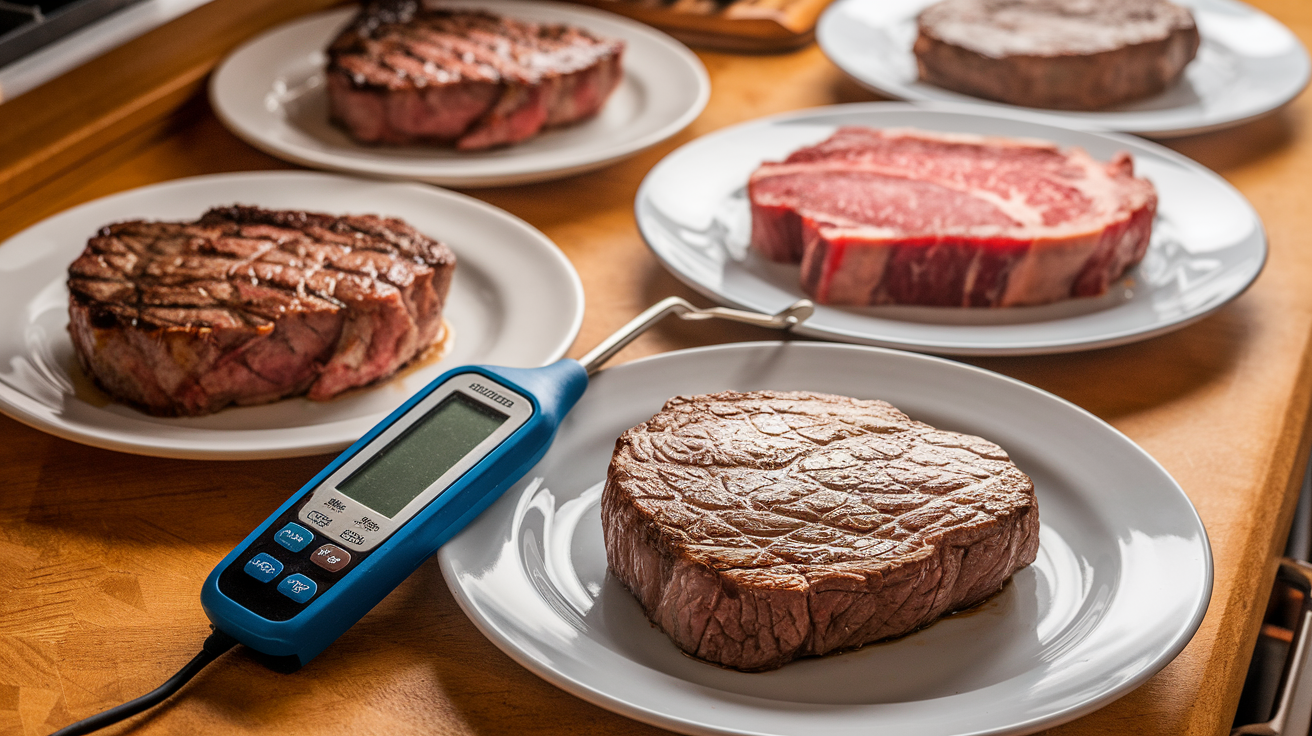
Importance of doneness for texture, flavor, and juiciness
Steak doneness plays a crucial role in determining the overall eating experience. The level of doneness directly impacts the texture, flavor, and juiciness of the meat. As the steak cooks, three key processes occur:
- Protein breakdown
- Water evaporation
- Fat melting
These processes contribute to the steak’s final characteristics. For instance, medium-rare (around 135°F) is often recommended as the optimal choice for balancing tenderness, flavor, and moisture retention. This level of doneness allows for sufficient protein breakdown to reduce chewiness while preserving the steak’s juiciness.
Cooking process: Outside-in method
The outside-in cooking method is essential for achieving the perfect steak. This technique involves searing the steak at high temperatures (above 500°F) to create a desirable crust through the Maillard effect. This process not only enhances flavor but also improves texture.
Here’s a breakdown of the cooking process:
Step Description
1. Preparation Bring steak to room temperature before cooking
2. Searing Cook at high heat to create a browned crust
3. Temperature monitoring Use a meat thermometer to check internal temperature
4. Resting Allow steak to rest for 3-5 minutes after cooking
Risks of overcooking and undercooking
Both overcooking and undercooking pose risks to the quality and safety of your steak:
- Overcooking: Leads to excessive moisture loss, resulting in a dry, tough texture and diminished flavor. Well-done steaks (160°F and above) often fall into this category.
- Undercooking: May not reach safe internal temperatures, potentially exposing diners to harmful bacteria. The USDA recommends a minimum internal temperature of 145°F for food safety.
To avoid these risks, it’s crucial to use a reliable meat thermometer and understand the characteristics of different doneness levels. For instance, rare steaks (120-130°F) feature a cool-to-warm red center, while medium steaks (140-150°F) have a hot pink center but may be slightly drier.
Now that we have covered the importance of steak doneness and the cooking process, we’ll explore the optimal temperatures for different doneness levels in the next section. This information will help you achieve your desired steak consistency with precision.
Optimal Temperatures for Different Doneness Levels
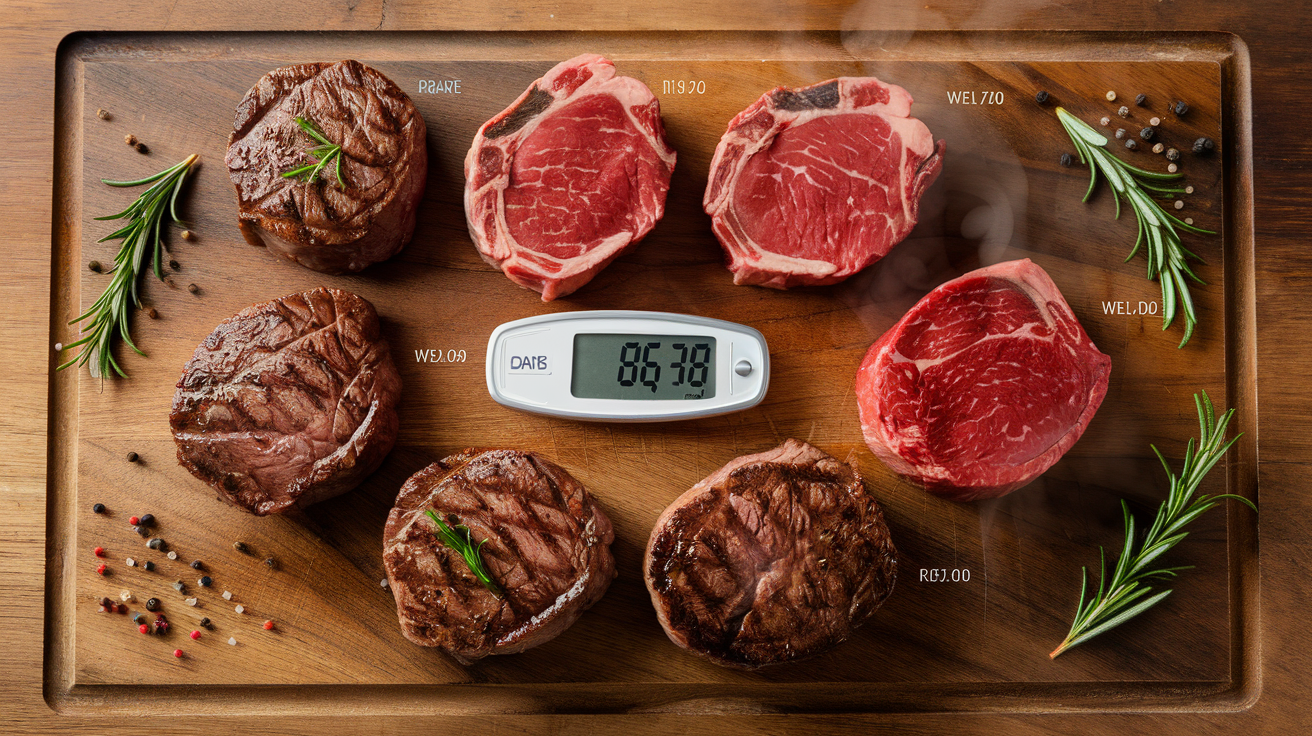
Now that we’ve covered the basics of understanding steak doneness, let’s delve into the optimal temperatures for achieving different levels of doneness. Knowing these temperatures is crucial for cooking the perfect steak to your desired level of doneness.
Rare (120°F): Cool-to-warm red center, tender texture
For those who enjoy their steak with a cool-to-warm red center and a tender texture, aim for an internal temperature of 120°F. At this temperature, the steak will have a browned exterior while maintaining a cool, red interior. The texture is exceptionally tender, making it a favorite among steak enthusiasts.
Medium Rare (130°F): Warm red center, enhanced flavor
Medium rare is often considered the optimal choice for flavor and juiciness. At 130°F, the steak features a warm red center with a nicely browned crust. This level of doneness allows for the fat to render, enhancing the overall flavor profile of the meat.
Medium (140°F): Hot pink center, slightly drier texture
For those who prefer a bit less red in their steak, medium doneness at 140°F offers a hot pink center. While still flavorful, the texture becomes slightly drier compared to rare and medium rare.
Medium Well (150°F): Mostly brown center, firmer and drier
At 150°F, the steak will have a mostly brown center with a firmer texture. This level of doneness results in increased dryness, which some diners prefer.
Well Done (160°F+): No color, very firm and dry (not recommended)
Well done steaks, cooked to 160°F or above, have no pink color and a very firm, dry texture. Most culinary experts do not recommend this level of doneness as it can significantly impact the steak’s flavor and juiciness.
Doneness Level Temperature Center Color Texture
Rare 120°F Cool-to-warm red Tender
Medium Rare 130°F Warm red Enhanced flavor
Medium 140°F Hot pink Slightly drier
Medium Well 150°F Mostly brown Firmer and drier
Well Done 160°F+ No color Very firm and dry
It’s important to note that these temperatures represent the final internal temperature of the steak. To achieve these results:
- Remove the steak from heat when it’s about 5°F below the target temperature.
- Allow the steak to rest for 3-5 minutes, during which it will continue to cook and reach the desired temperature.
- Use a reliable digital meat thermometer for accurate readings.
Remember, checking the color alone can be misleading and may lead to loss of juices. Always rely on temperature for the most accurate results.
With these optimal temperatures in mind, we’ll next explore various techniques for achieving perfect doneness in your steak cooking endeavors.
Techniques for Achieving Perfect Doneness
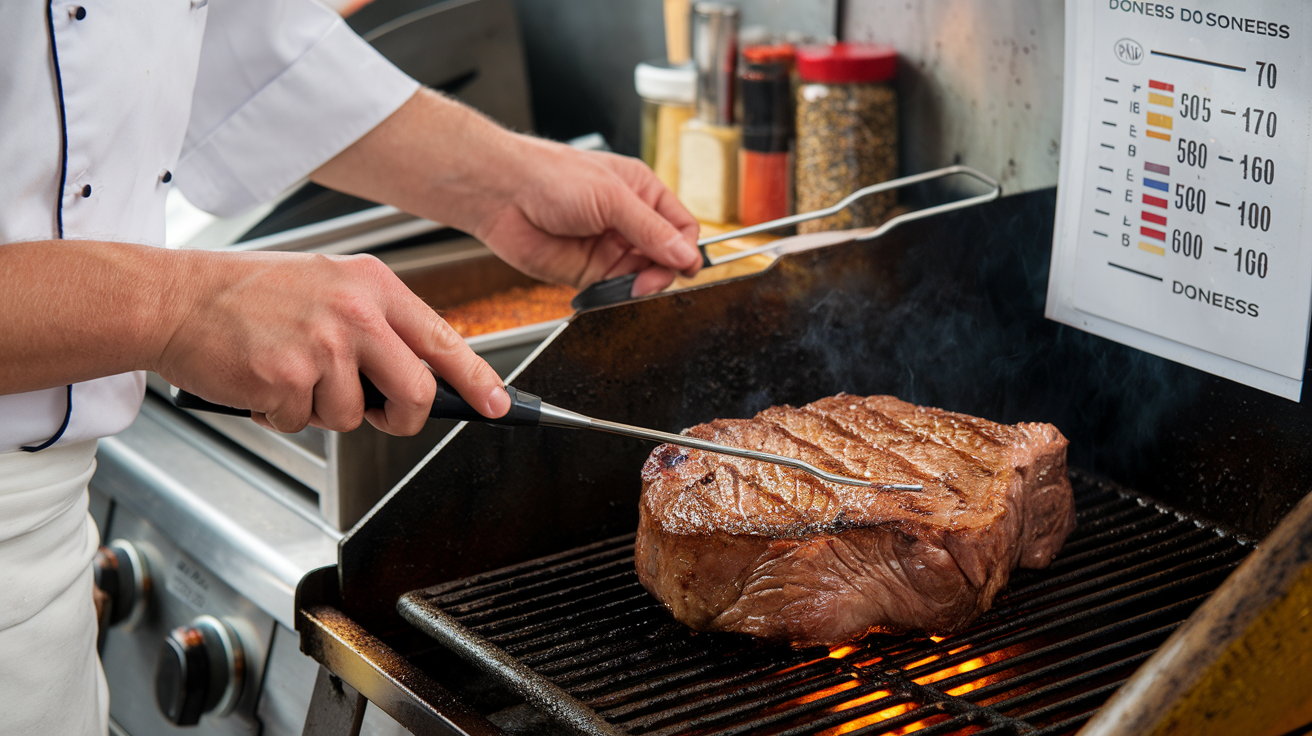
Now that we’ve covered the optimal temperatures for different doneness levels, let’s explore the techniques for achieving perfect doneness in your steak. To ensure accurate temperature readings, check out Wirecutter’s top picks for meat thermometers.
Bringing steak to room temperature before cooking
Before cooking, it’s crucial to bring your steak to room temperature. This ensures even cooking throughout the meat, resulting in a more consistent doneness. Allow your steak to sit out for about 30 minutes before cooking, depending on its thickness.
Using an instant-read meat thermometer
An instant-read meat thermometer is your best friend when it comes to achieving the perfect doneness. It provides accurate temperature readings, eliminating guesswork and ensuring your steak reaches the desired level of doneness.
Inserting thermometer correctly (center, avoiding bone and fat)
To get an accurate reading, insert the thermometer into the thickest part of the steak, avoiding bone and fat. The center of the steak will give you the most reliable temperature reading.
Removing steak before reaching target temperature
It’s important to remove your steak from heat before it reaches the target temperature. The internal temperature will continue to rise during the resting period. Here’s a guide for when to remove your steak:
Desired Doneness Remove at Final Temperature
Rare 115°F 120°F
Medium Rare 125°F 130°F
Medium 135°F 140°F
Medium Well 145°F 150°F
Well Done 155°F 160°F
Resting the steak for 3-5 minutes after cooking
After cooking, allow your steak to rest for 3-5 minutes. This crucial step allows the juices to redistribute throughout the meat, resulting in a more flavorful and juicy steak. During this time, the internal temperature will continue to rise slightly, reaching the final desired temperature.
Key benefits of resting your steak:
- Enhances juiciness
- Improves flavor distribution
- Allows for the final temperature rise
With these techniques in mind, you’ll be well-equipped to achieve the perfect doneness for your steak. Next, we’ll explore some tips for successful steak cooking to further elevate your culinary skills.
Tips for Successful Steak Cooking
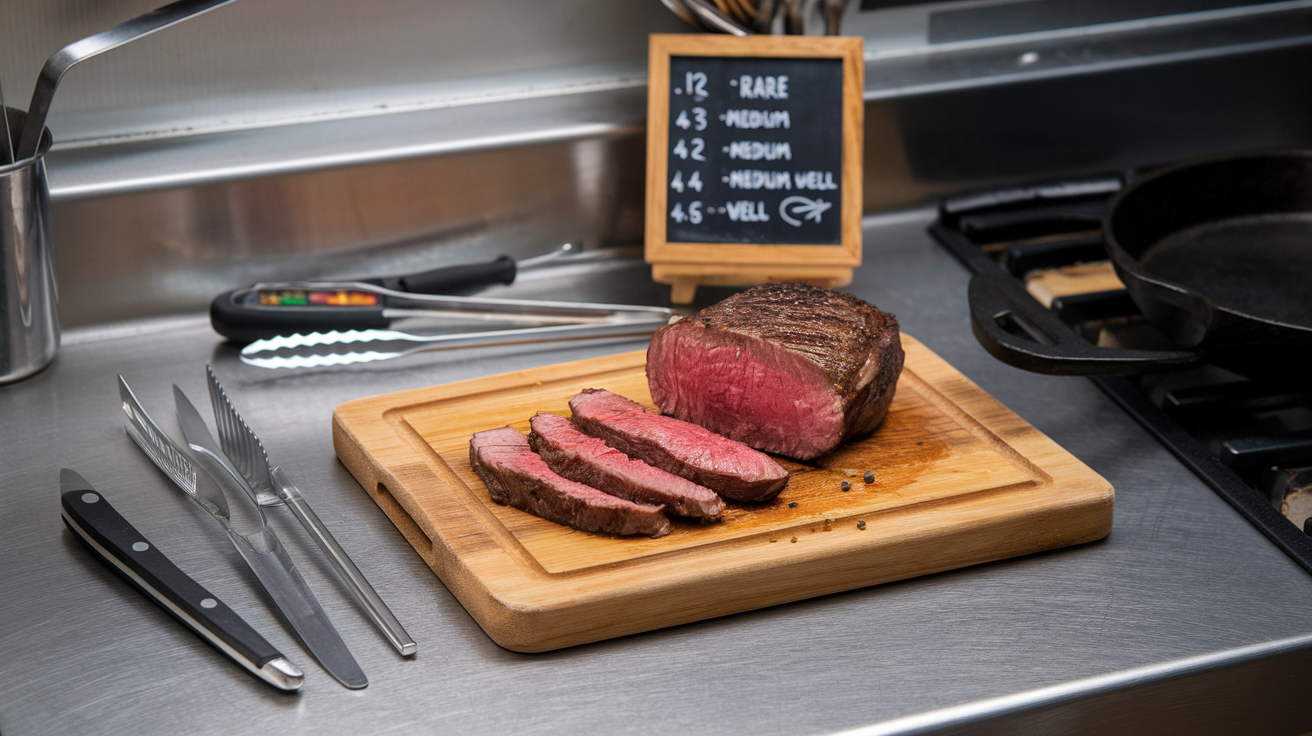
Now that we’ve covered techniques for achieving perfect doneness, let’s explore some essential tips for successful steak cooking. These tips will help you elevate your steak game and ensure consistently delicious results.
Following USDA guidelines for food safety
When it comes to cooking steak, it’s crucial to adhere to food safety guidelines. The USDA recommends specific internal temperatures for different levels of doneness:
Doneness Level Internal Temperature
Rare 120°–125°F
Medium Rare 130°–135°F
Medium 140°–145°F
Medium Well 150°–155°F
Well Done 160°–165°F
Remember to remove the steak from heat when it’s about 5°F below the target temperature, as it will continue cooking during the resting period.
French-style finishing with butter and herbs
To add an extra layer of flavor and richness to your steak, consider using the French-style finishing technique:
- After cooking the steak to your desired doneness, return it to the pan.
- Add a pat of butter and your choice of fresh herbs (such as thyme or rosemary).
- Baste the steak with the melted butter and herb mixture for a minute or two.
This method enhances the steak’s flavor profile and creates a beautiful, glossy finish.
Practicing and familiarizing with cooking appliances
Mastering steak cooking requires practice and familiarity with your cooking equipment. Whether you’re using a grill, stovetop, or oven, understanding how your appliances perform is crucial. Here are some tips:
- For pan-searing, preheat your skillet over high heat before adding the steak.
- When using the oven, preheat it to 400°F for quick roasting.
- If grilling, ensure your grill is properly preheated and clean before cooking.
Adjusting for different cuts and preparation methods
Different steak cuts and preparation methods require slight adjustments in cooking techniques:
- For steak tips, consider using a tenderizing marinade before cooking.
- Pan-sear steak tips for one minute on each side, then transfer to a preheated oven for 3-5 minutes.
- When slow-cooking steak tips in a crockpot or Instant Pot, allow several hours for the meat to become tender.
By following these tips and adjusting your approach based on the cut and method, you’ll be well on your way to consistently achieving perfectly cooked steaks. In the next section, we’ll explore common mistakes to avoid, ensuring that your steak cooking experience is flawless from start to finish.
Common Mistakes to Avoid
Now that we’ve covered tips for successful steak cooking, let’s delve into some common mistakes to avoid when preparing your perfect steak. By being aware of these pitfalls, you can ensure that your efforts in the kitchen result in a delicious, perfectly cooked steak every time.
Relying on color as an indicator of doneness
One of the most frequent errors in steak cooking is judging doneness solely by the color of the meat. While color can provide some indication, it’s not a reliable method for determining the perfect level of doneness. Instead, use a meat thermometer to accurately measure the internal temperature of your steak. This approach ensures you achieve your desired level of doneness without risking overcooking or undercooking.
Doneness Level Internal Temperature
Rare 125°F (52°C)
Medium Rare 135°F (57°C)
Medium 145°F (63°C)
Medium Well 150°F (66°C)
Well Done 160°F (71°C)
Overcooking the exterior while waiting for interior doneness
Another common mistake is cooking the steak at too high a temperature for too long, resulting in an overcooked exterior and an undercooked interior. To avoid this, consider using the following techniques:
- For thicker cuts, sear the steak on high heat to create a crust, then finish cooking in the oven at a lower temperature.
- Use the reverse sear method: start the steak in a low-temperature oven, then finish with a quick sear on high heat.
- Flip the steak multiple times during cooking to promote even heat distribution.
Not accounting for continued cooking during the resting period
Many cooks forget that steak continues to cook even after it’s removed from the heat source. This phenomenon, known as carryover cooking, can cause your perfectly medium-rare steak to become medium or even well-done if not accounted for. To prevent this:
- Remove the steak from heat when it’s about 5°F (3°C) below your target temperature.
- Allow the steak to rest for 5-10 minutes before cutting into it.
- Use this resting time to your advantage by tenting the steak with foil to retain heat and redistribute juices.
By avoiding these common mistakes, you’ll be well on your way to consistently preparing restaurant-quality steaks at home. With practice and attention to detail, you’ll master the art of steak cooking and impress your family and guests with perfectly cooked cuts every time.
As we move on to the FAQ section, we’ll address some of the most common questions that arise when it comes to steak doneness and temperature. These frequently asked questions will help clarify any lingering doubts and provide you with additional insights to further refine your steak cooking skills.
FAQ’s
How long should I let my steak rest after cooking?
After cooking, it’s crucial to let your steak rest for optimal flavor and juiciness. The general rule of thumb is to rest your steak for about 5-10 minutes, depending on its thickness. This allows the juices to redistribute throughout the meat, ensuring a more tender and flavorful bite.
Steak Thickness Recommended Resting Time
1 inch or less 5 minutes
1-2 inches 7-8 minutes
2+ inches 10 minutes
What’s the best way to check steak doneness without cutting into it?
To check steak doneness without compromising its integrity, consider these methods:
- Use a meat thermometer
- Try the finger test method
- Observe the color of the juices
- Feel the steak’s firmness
A meat thermometer is the most accurate method, providing precise internal temperature readings.
Can I use the same cooking method for different cuts of steak?
While you can use similar methods for different cuts, it’s best to adjust your technique based on the steak’s characteristics:
- Tender cuts (ribeye, tenderloin): Quick, high-heat methods like grilling or pan-searing
- Tougher cuts (flank, skirt): Benefit from marinades and slower cooking methods
How can I achieve a good crust on my steak?
To achieve a delicious crust:
- Pat the steak dry before cooking
- Use a very hot pan or grill
- Avoid moving the steak too much during cooking
- Consider using a cast-iron skillet for even heat distribution
What’s the difference between rare and medium-rare steak?
The main difference lies in the internal temperature and appearance:
Doneness Internal Temperature Appearance
Rare 125°F (52°C) Red center, cool
Medium-rare 135°F (57°C) Red center, warm with pink outer ring
Medium-rare is often considered the ideal doneness for most steaks, offering a balance of flavor and tenderness.

